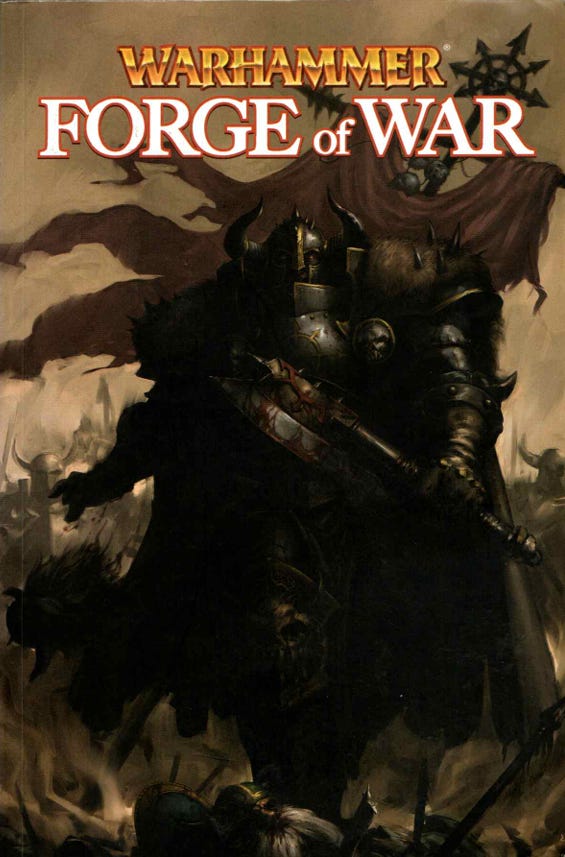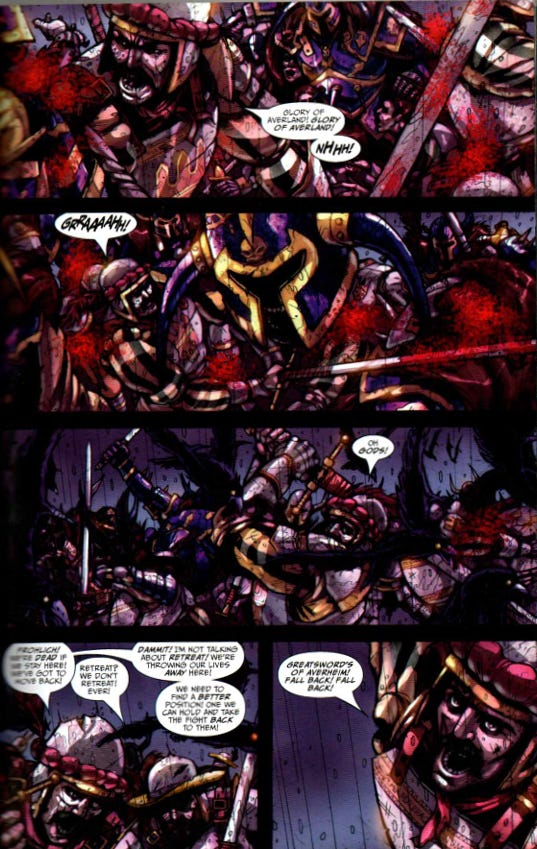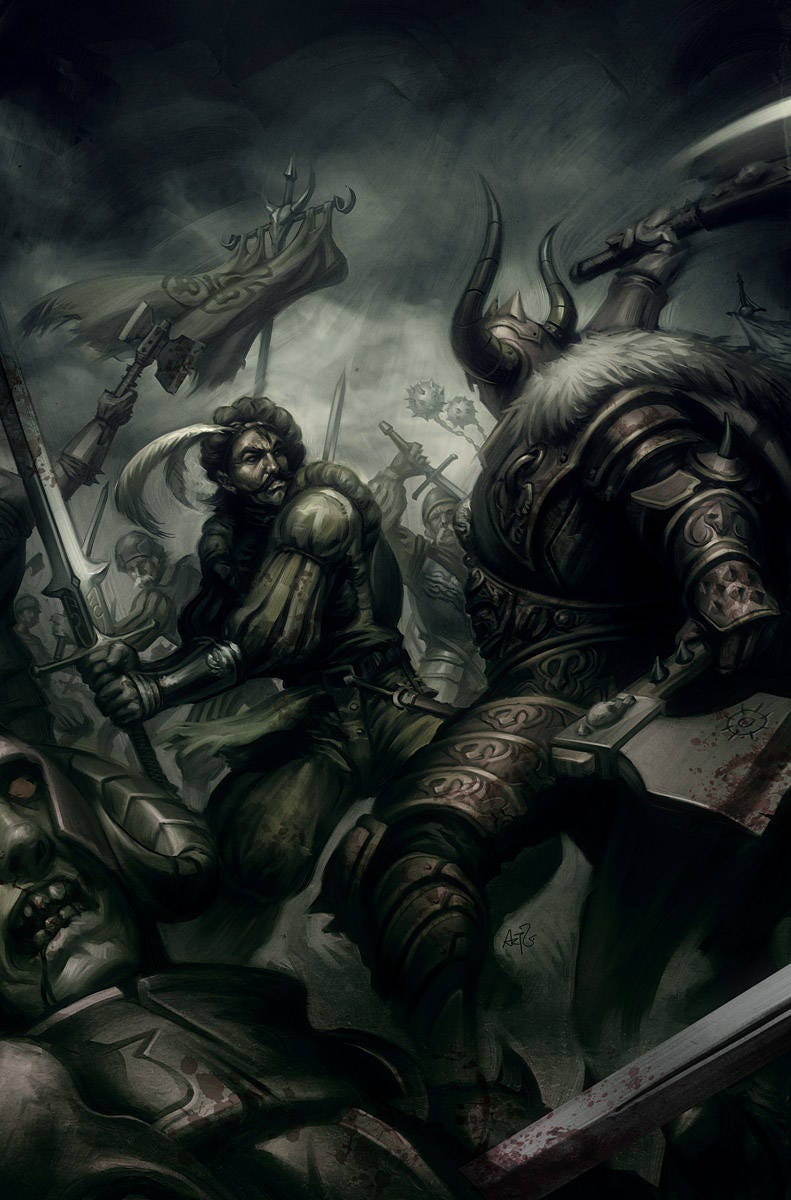Forge of War - A Warhammer Comic Review
A comic miniseries from the twilight years of Warhammer Fantasy Battle serves as an introductory tale that's just too basic.
Warhammer: Forge of War by Dan Abnett, Ian Edginton, and Rahsan Ekedal
Published in 2008
In the later editions of the tabletop game, Warhammer Fantasy would make another foray into comics with several miniseries published by Boom! Studios. Most of these were a step down from Warhammer Monthly, Games Workshop’s early attempt at a 2000 AD-style comic anthology. The Boom! comics were aimed at a slightly broader audience by comparison, with Forge of War written as an introductory tale for the setting. The miniseries touted Dan Abnett and Ian Edginton, two veteran comic writers, the former widely held as the last word in Warhammer fiction. Notably, Abnett gave us Malus Darkblade, one of the only success stories from previous Warhammer comics.
Unfortunately, Forge of War doesn’t live up to its promise. The comic tells a basic tale, following three different parties struggling to survive the aftermath of a major victory for the forces of Chaos. A wizard traumatized by these sorcerous circumstances and his hapless bodyguard come closest to feeling like actual characters. The other two groups, a band of interchangeable Averland greatswords and a few grudge-obsessed Dwarfs, feel more like archetypes. There’s none of the humanity or history that made Abnett’s other creations such enduring figures in Warhammer fiction.
The scenarios in Forge of War are slightly better than the cast, if fairly predictable. The protagonists run into plenty of horrors as they try to escape the encroaching Chaos horde, with a convent secretly run by Lahmian vampires on the more predictable side. It’s unfortunate that the only women to play any real role in what’s meant to be an introductory Warhammer story are one-dimensional alluring temptresses – at least Genevieve and Ulrika have some class.
The group of Dwarfs trying to survive a Chaos gladiator pit is a bit more interesting if not particularly daring. Their complete misunderstanding of the circumstances around their defeat feels very true to the setting and creates some promising but far too easily resolved conflict.
The fourth, penultimate issue is the standout and the only time Abnett and Edginton’s experience shines through. The greatswords finally reunite with the errant celestial wizard, only to encounter the feral Griffon previously ridden by their general. The former rider’s severed legs and pelvis are still attached to his once-noble mount, which now terrorizes the village they’ve taken refuge in. It’s the only time Forge of War feels distinctly like Warhammer Fantasy and not just gorier than usual generic Western fantasy.
After that glimpse of brilliance, the climax ties things up a bit too neatly, opting for an ambiguous ending. A heroic last stand with no clear indicator of success is distinctly Warhammer Fantasy, but also more than a little anticlimactic. My favorite Warhammer tales tend to have more concrete but still bittersweet endings – ironically Dan Abnett has written quite a few of those.
As for the visuals, Rahsan Ekedal offers serviceable if inconsistent art. To his credit, he brings proper ultraviolence to the table and tries his best to capture the visual quirks of the setting, with flamboyant Empire uniforms and menacing Chaos warriors. But Ekedal’s art has a certain “flat” quality made worse by subpar colorwork, which deflates the atmosphere and hurts the overall experience.
The covers are slightly better but suffer from some strange composition choices that Ekedal mostly avoids. There are a couple of diamonds in the rough — namely an Adrian Smith variant cover for issue 1 and shockingly prolific comic artist Artgerm’s first-ever cover for issue 5. Otherwise, it’s most of what you’d expect.
Overall, I can’t imagine that Forge of War won too many new Warhammer Fantasy fans, especially at such a low point for the game. I don’t fault any of the individual contributors, as I think the goal of creating an introductory work backfired. In trying to be accessible, it sanded off most of what makes Warhammer Fantasy stand out in such a crowded genre.
Forge of War is currently out of production. It previously received Boom! and Black Library collected editions. It was not digitally released. Secondhand copies can be found for about 40 USD.









